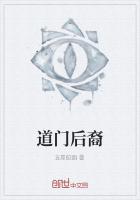Four wire-using businesses were already in the field when the telephone was born: the fire-alarm, burglar-alarm, telegraph, and messenger-boy service; and at first, as might have been expected, the humble little telephone was huddled in with these businesses as a sort of poor relation. To the general public, it was a mere scientific toy; but there were a few men, not many, in these wire-stringing trades, who saw a glimmering chance of creating a telephone business.
They put telephones on the wires that were then in use. As these became popular, they added others. Each of their customers wished to be able to talk to every one else. And so, having undertaken to give telephone service, they presently found themselves battling with the most intricate and baffling engineering problem of modern times--the construction around the tele-phone of such a mechanism as would bring it into universal service.
The first of these men was Thomas A. Watson, the young mechanic who had been hired as Bell's helper. He began a work that to-day requires an army of twenty-six thousand people. He was for a couple of years the total engineering and manufacturing department of the telephone business, and by 1880 had taken out sixty patents for his own suggestions. It was Watson who took the telephone as Bell had made it, really a toy, with its diaphragm so delicate that a warm breath would put it out of order, and toughened it into a more rugged machine. Bell had used a disc of fragile gold-beaters' skin with a patch of sheet-iron glued to the centre. He could not believe, for a time, that a disc of all-iron would vibrate under the slight influence of a spoken word.
But he and Watson noticed that when the patch was bigger the talking was better, and presently they threw away the gold-beaters' skin and used the iron alone.
Also, it was Watson who spent months experimenting with all sorts and sizes of iron discs, so as to get the one that would best convey the sound. If the iron was too thick, he discovered, the voice was shrilled into a Punch-and-Judy squeal; and if it was too thin, the voice became a hollow and sepulchral groan, as if the speaker had his head in a barrel. Other months, too, were spent in finding out the proper size and shape for the air cavity in front of the disc.
And so, after the telephone had been perfected, IN PRINCIPLE, a full year was required to lift it out of the class of scientific toys, and another year or two to present it properly to the business world.
Until 1878 all Bell telephone apparatus was made by Watson in Charles Williams's little shop in Court Street, Boston--a building long since transformed into a five-cent theatre. But the business soon grew too big for the shop.
Orders fell five weeks behind. Agents stormed and fretted. Some action had to be taken quickly, so licenses were given to four other manufacturers to make bells, switchboards, and so forth. By this time the Western Electric Company of Chicago had begun to make the infringing Gray-Edison telephones for the Western Union, so that there were soon six groups of mechanics puzzling their wits over the new talk-machinery.
By 1880 there was plenty of telephonic apparatus being made, but in too many different varieties. Not all the summer gowns of that year presented more styles and fancies. The next step, if there was to be any degree of uniformity, was plainly to buy and consolidate these six companies; and by 1881 Vail had done this.
It was the first merger in telephone history.
It was a step of immense importance. Had it not been taken, the telephone business would have been torn into fragments by the civil wars between rival inventors.
From this time the Western Electric became the headquarters of telephonic apparatus. It was the Big Shop, all roads led to it. No matter where a new idea was born, sooner or later it came knocking at the door of the Western Electric to receive a material body. Here were the skilled workmen who became the hands of the telephone business. And here, too, were many of the ablest inventors and engineers, who did most to develop the cables and switchboards of to-day.
In Boston, Watson had resigned in 1882, and in his place, a year or two later stood a timely new arrival named E. T. Gilliland. This really notable man was a friend in need to the telephone.
He had been a manufacturer of electrical apparatus in Indianapolis, until Vail's policy of consolidation drew him into the central group of pioneers and pathfinders. For five years Gilliland led the way as a developer of better and cheaper equipment. He made the best of a most difficult situation. He was so handy, so resourceful, that he invariably found a way to unravel the mechanical tangles that perplexed the first telephone agents, and this, too, without compelling them to spend large sums of capital. He took the ideas and apparatus that were then in existence, and used them to carry the telephone business through the most critical period of its life, when there was little time or money to risk on experiments. He took the peg switchboard of the telegraph, for in-stance, and developed it to its highest point, to a point that was not even imagined possible by any one else. It was the most practical and complete switchboard of its day, and held the field against all comers until it was superseded by the modern type of board, vastly more elaborate and expensive.
By 1884, gathered around Gilliland in Boston and the Western Electric in Chicago, there came to be a group of mechanics and high-school graduates, very young men, mostly, who had no reputations to lose; and who, partly for a living and mainly for a lark, plunged into the difficulties of this new business that had at that time little history and less prestige. These young adventurers, most of whom are still alive, became the makers of industrial history. They were unquestionably the founders of the present science of telephone engineering.
The problem that they dashed at so lightheartedly was much larger than any of them imagined.















